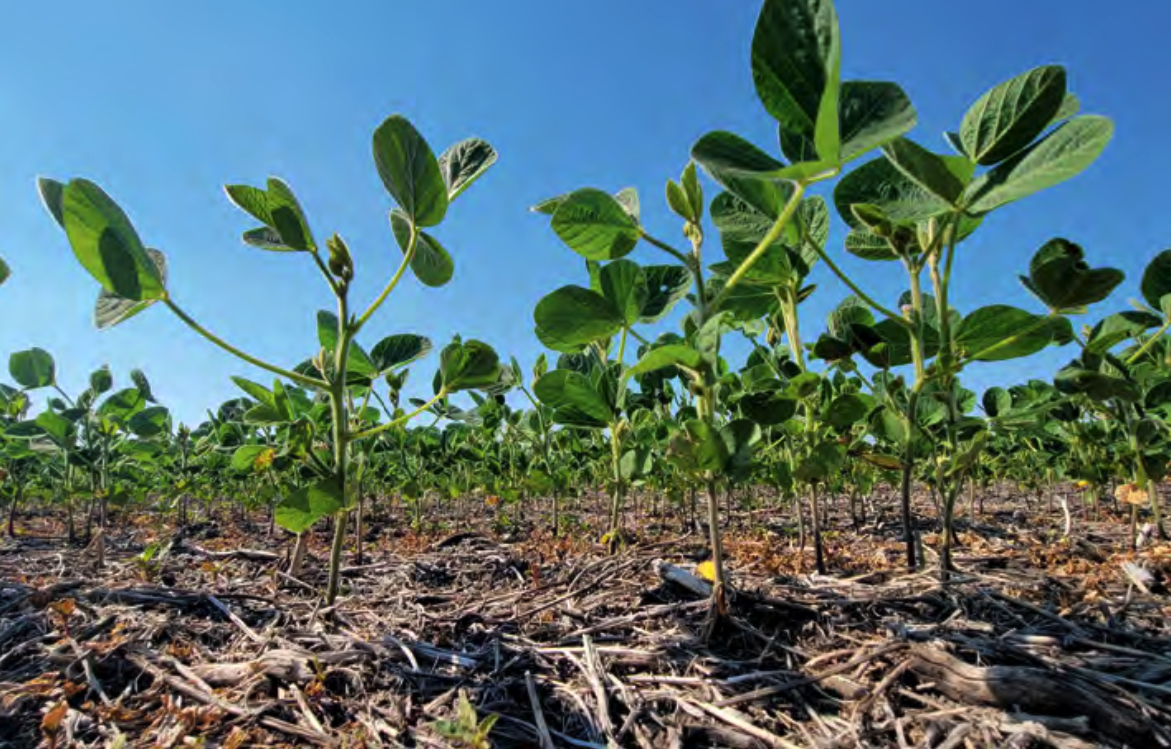MPSG RESEARCHER, BRANDON UNIVERSITY
Better yields through early season disease detection
Matt McIntosh, farmer and writer
DETECTING AND TREATING crops for diseases can be an uphill battle. Bryan Cassone, professor and chair of Brandon University’s Department of Biology, has been researching ways soybean growers can get a head start.
With funding from MPSG, Cassone started developing an early season disease detection method in 2016. The intention – to achieve a much higher level of success in identifying disease pressure and doing so early enough to prevent yield loss.
As Cassone describes, disease-causing microorganisms in soybeans can cause drops in both yield and quality. While Manitoba growers have experienced comparatively smaller yield reductions from pathogens, the need for more accurate and faster identification is growing as disease pressures themselves change.
“Most disease prevention involves looking at symptoms in the plant. Studies show this isn’t really an accurate way of doing it, maybe hitting a 30 per cent success rate on a good day. That’s wildly inaccurate. You might as well not do it,” says Cassone. He adds diagnoses, even when accurate, often occur when significant damage has already been incurred. If crops could be diagnosed accurately before physical
signs of infection appear, growers could proactively implement much more effective control measures.
The intervening years saw the development of a diagnostic tool capable of identifying a wide range of common soybean pathogens within about one day of tissue submission.
“What we did was harness genetic sequencing and develop a method of identifying diseases without any knowledge of them visually…We can now test soybean plants for most of the major diseases without seeing symptoms. It’s very quick and a cheaper way to do it,” Cassone says.
“Most labs have the infrastructure to do this. We would like to do this in house but we need to know there is enough demand before putting up the resources.”
Disease identification and prevention are not the only projects on which Cassone has partnered with MPSG. Wireworm marking, for example, offers another case of a historically benign problem for Manitoba soybean growers, albeit one necessitating more attention in recent years.

“The thing with wireworm is there hasn’t been much work on them because they were effectively controlled by lindane. Then the product was banned. Wireworms blew up in numbers and became a concern for some growers,” says Cassone.
“We characterized species of wireworms throughout Manitoba, learning a lot moreabout its basic biology and optimizing ways to survey them. That’s important for control. We also recently published the first semi-field study trying to figure out the actual damage capacity wireworms have in soybeans. There appears to be a lot more damage potential than we previously thought.”
In the future, Cassone and his colleagues hope to expand the capability of their pathogen diagnostic tool to include additional geographies – the tool has already proven effective in Manitoba and Ohio, and there’s no reason to think it can’t work elsewhere – as well as a wider range of crop diseases. Additionally, he hopes there will be opportunity harness mRNA tools to incorporate disease and pest resistance directly into more crop varieties.


